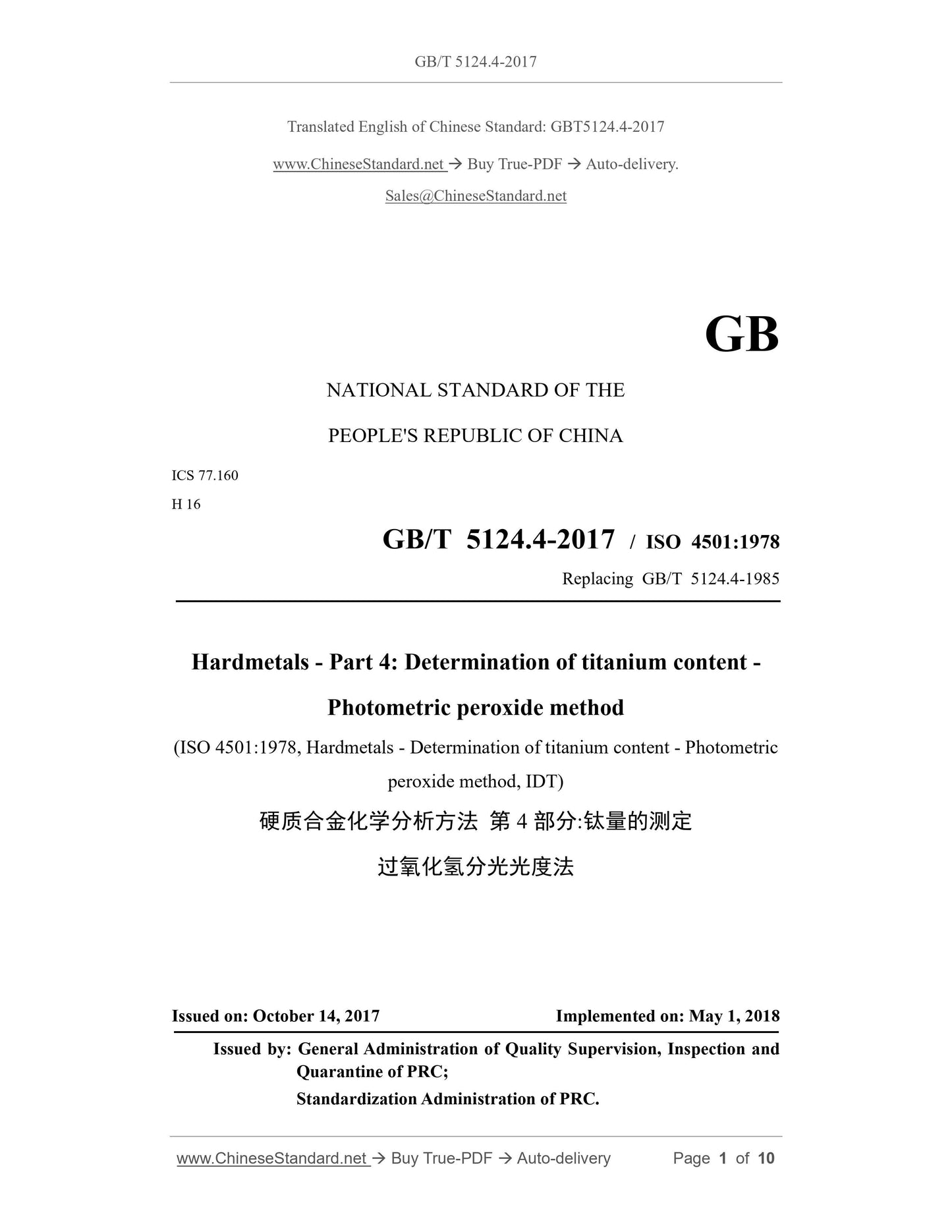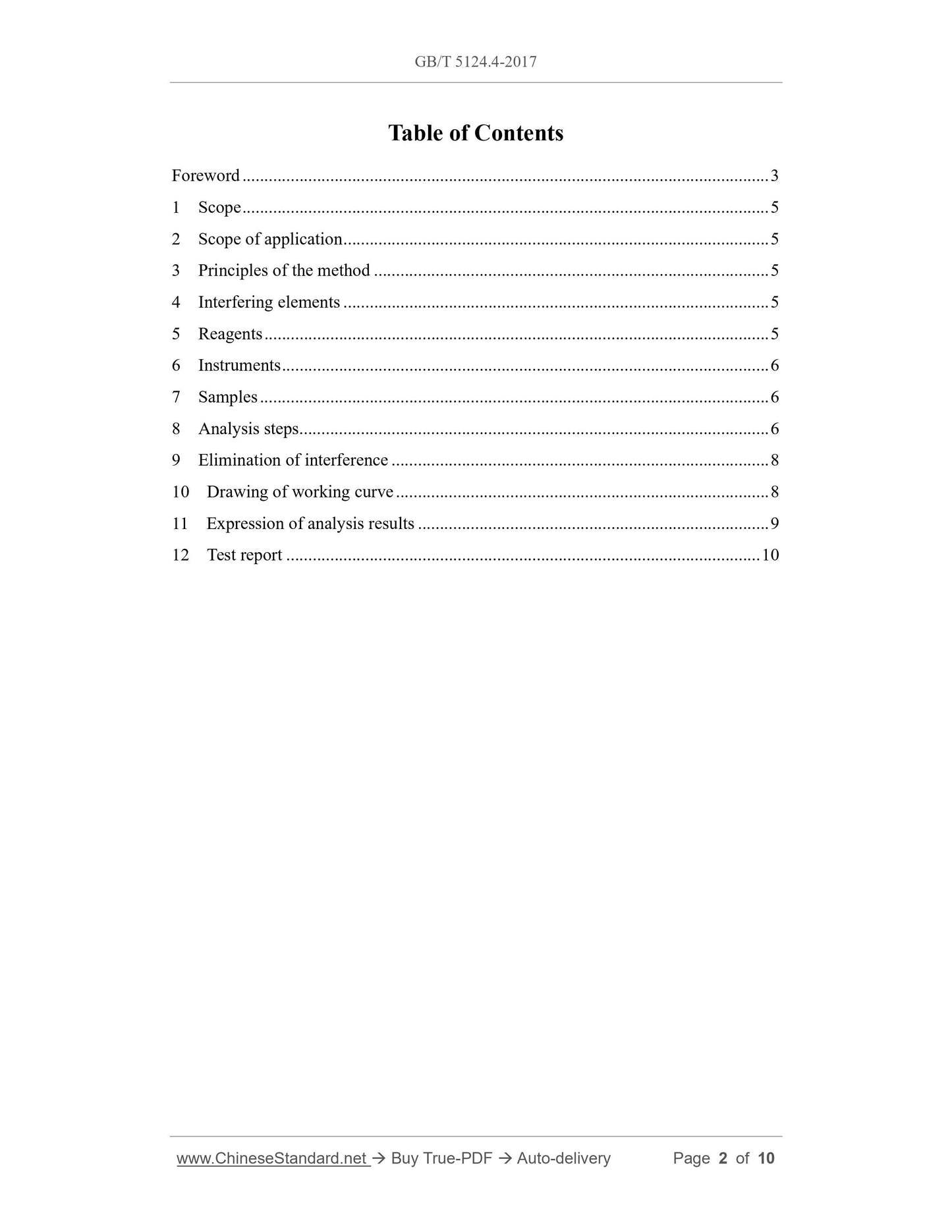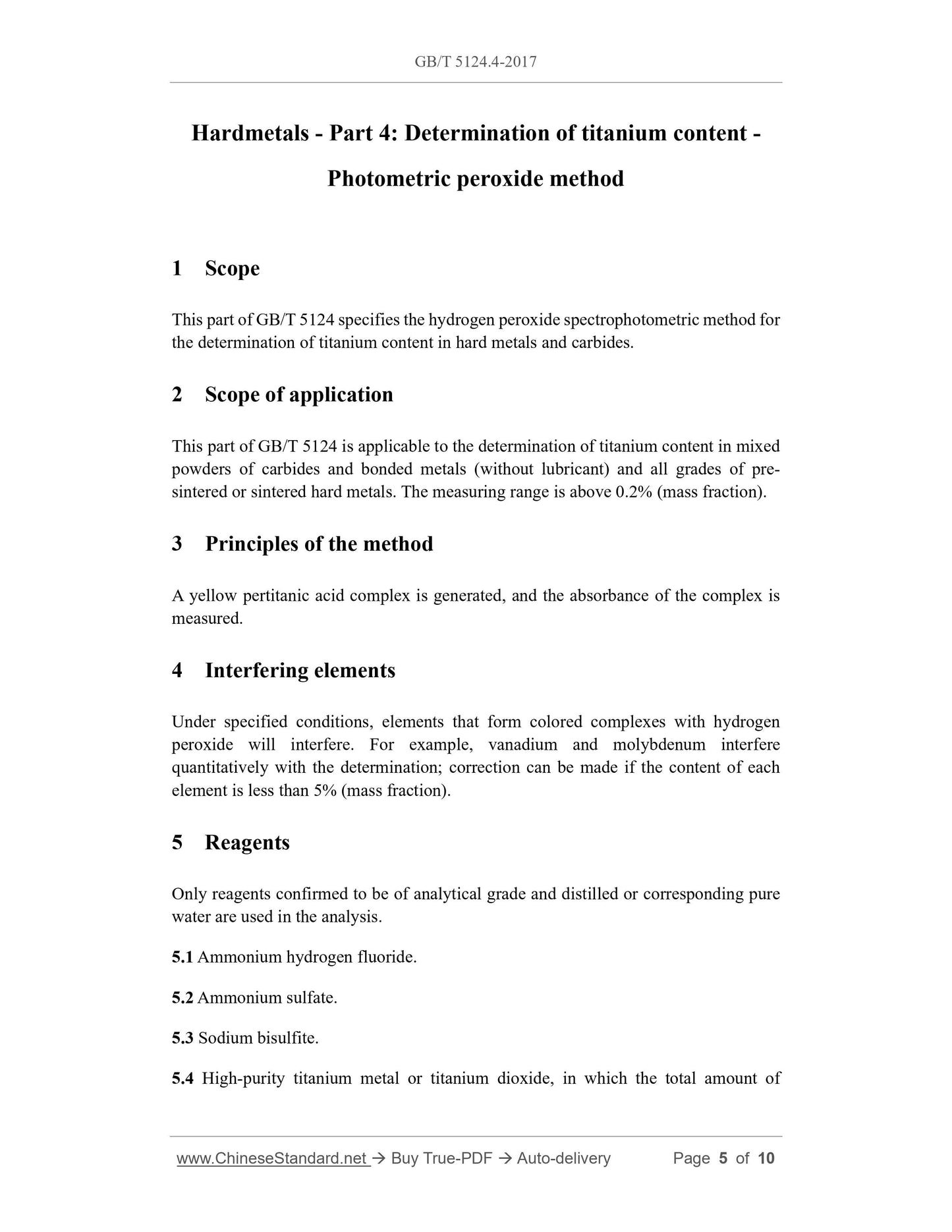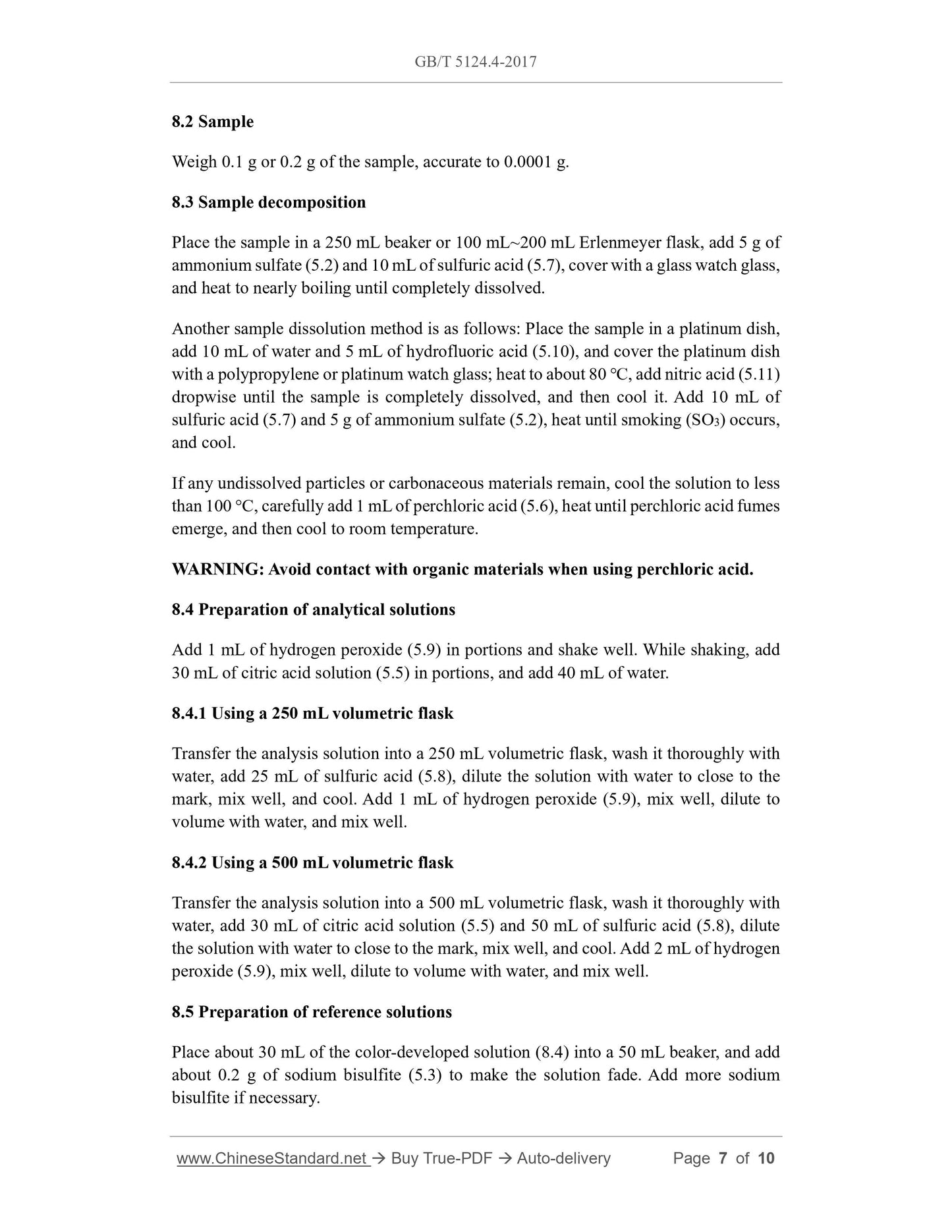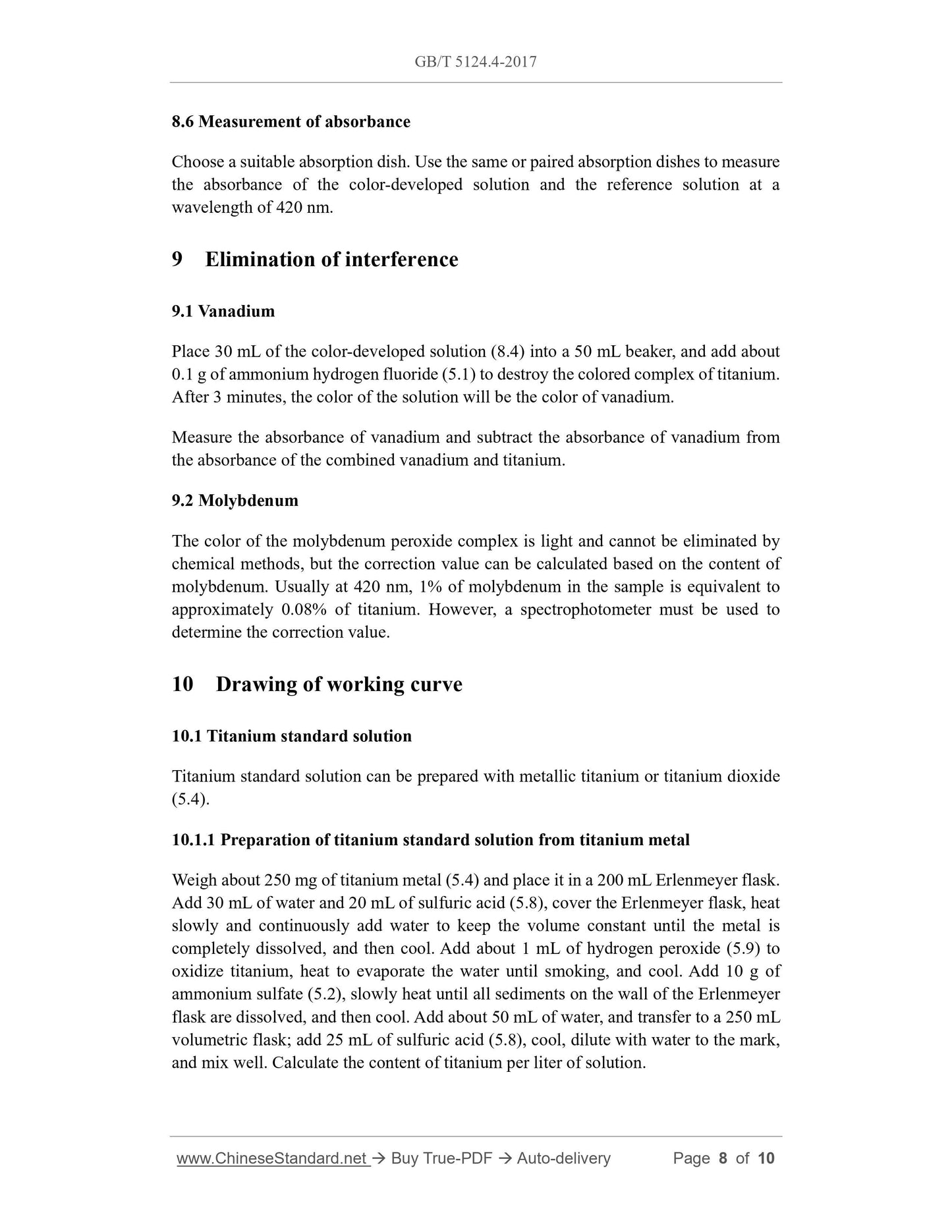1
/
of
5
www.ChineseStandard.us -- Field Test Asia Pte. Ltd.
GB/T 5124.4-2017 English PDF (GB/T5124.4-2017)
GB/T 5124.4-2017 English PDF (GB/T5124.4-2017)
Regular price
$140.00
Regular price
Sale price
$140.00
Unit price
/
per
Shipping calculated at checkout.
Couldn't load pickup availability
GB/T 5124.4-2017: Hard metals -- Part 4: Determination of titanium content -- Photometric peroxide method
Delivery: 9 seconds. Download (and Email) true-PDF + Invoice.Get Quotation: Click GB/T 5124.4-2017 (Self-service in 1-minute)
Newer / historical versions: GB/T 5124.4-2017
Preview True-PDF
Scope
This part of GB/T 5124 specifies the hydrogen peroxide spectrophotometric method forthe determination of titanium content in hard metals and carbides.
Basic Data
| Standard ID | GB/T 5124.4-2017 (GB/T5124.4-2017) |
| Description (Translated English) | Hard metals -- Part 4: Determination of titanium content -- Photometric peroxide method |
| Sector / Industry | National Standard (Recommended) |
| Classification of Chinese Standard | H16 |
| Classification of International Standard | 77.160 |
| Word Count Estimation | 10,127 |
| Date of Issue | 2017-10-14 |
| Date of Implementation | 2018-05-01 |
| Issuing agency(ies) | General Administration of Quality Supervision, Inspection and Quarantine of the People's Republic of China, Standardization Administration of the People's Republic of China |
Share
